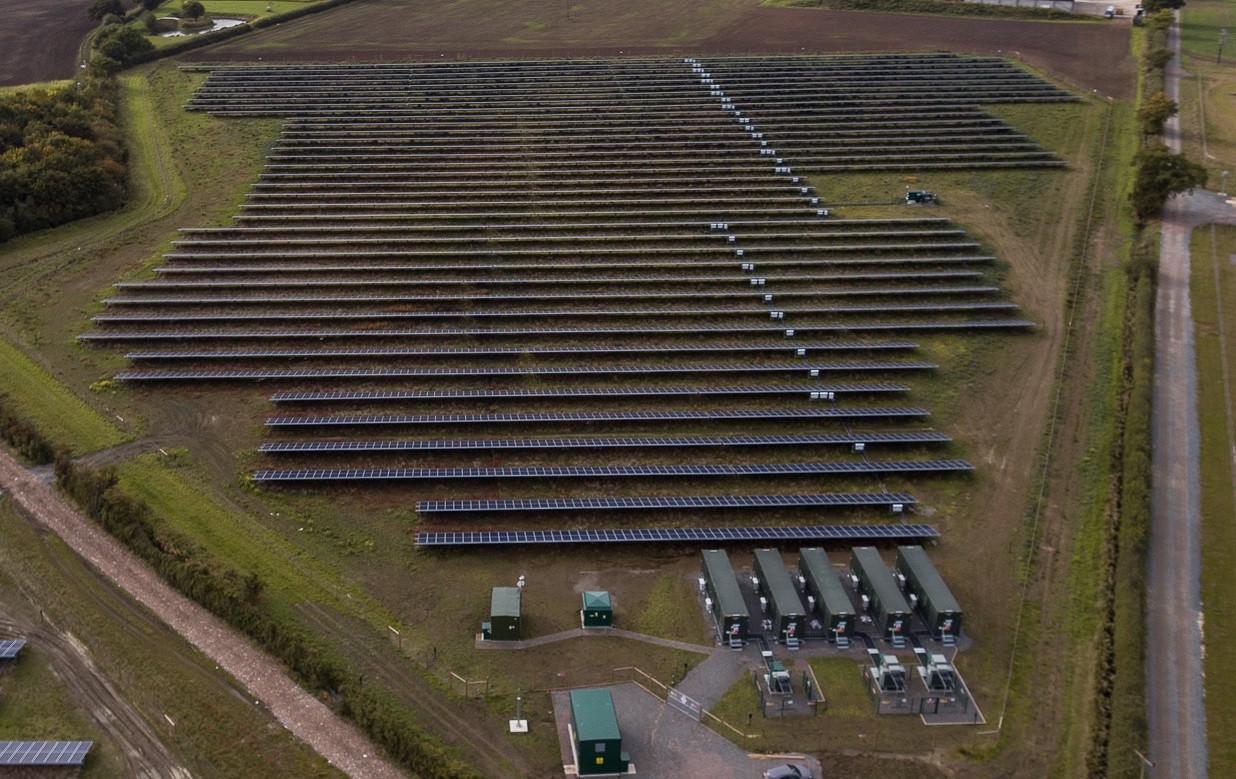
Guidance issued by the transmission system operator (TSO) National Grid on how to co-locate energy storage with generation facilities has been welcomed by an analyst at the Renewable Energy Association.
National Grid published a short document near the end of last month on existing processes and arrangements for generation – both renewable and non-renewable – to co-locate with energy storage onsite.
It follows from July’s ‘Smart Systems and Flexibility’ plan, published by the Department for Business, Energy and Industrial Strategy (BEIS) and regulator Ofgem, which found that one of the barriers to the creation of this more decentralised and flexible system was “perceived and actual barriers to storage being able to easily co-locate with generation assets”.
Frank Gordon, a policy manager with the UK trade association, told sister publication Energy-Storage.News that the REA believes “energy storage located on-site at renewables projects is a key market for future energy storage deployment”, with the group and the political All-Party Parliamentary Group on Energy Storage estimating that onshore wind and solar farms in Britain could host 5GW of energy storage in a medium-term scenario.
Gordon said that the document is “useful guidance from National Grid as any information on this important issue is welcome in the face of current policy-related uncertainties for developers in this space”.
Guidance ‘welcome but highlights the need for a charging review’
The guidance distinguishes between projects connected in Parallel, where the generation and energy storage have separate connections to the transmission network, and Consolidated connections, where the energy storage sits behind the connection for an existing generation asset. It then looks at each in terms of applicable connection, charging regime and compliance requirements.
New parallel connections will be applied for to the TSO while consolidated connections will require amendments to existing connection agreements.
New projects would have to deal with existing system charging regimes, Gordon explained, while pointing out that this is one of the areas that still requires some work. Regulator Ofgem is consulting on introducing a new code class for energy storage, Gordon said.
“The draft guidance explicitly flags up that new assets at a shared grid connection point will likely feature different characteristics to those existing assets, and therefore the existing charging regime may not fit with this situation and require reform – they say more will be communicated to industry in due course.”
Lauren Cook, analyst with Solar Media’s Market Research division, agreed that the guidance was welcome, but explained that since the “biggest barrier remains financial” for battery storage projects, the guidance would perhaps not have as big an impact as international observers might expect.
“It mostly applies to existing generation which is looking to co-locate batteries as it talks about parallel and consolidated connections. The reason you would do something like that for solar is because of a subsidy such as the feed-in tariff (FiT) or Renewables Obligation (RO) but to comply with rules for existing projects,” Cook said.
In September 2017, Ofgem confirmed solar farms are able to retain accreditation under the government Renewables Obligation (RO) when supplying electricity to batteries. Energy efficiency solutions provider and solar farm developer Anesco was the first beneficiary of that ruling.
“It’s useful in clarifying how to co-locate and will be looked at by solar asset owners and developers over the next few years,” Cook said on the expected direction of the market.
“In terms of new projects it’s not something that will come up so frequently because the battery will be a lot more integrated into those projects from the beginning [of development]. So instead of applying for a solar farm, you’d apply for a solar farm with battery storage included. You wouldn’t be then retrospectively look to integrate because it will be all ‘one thing’ from the very beginning.”
Gordon agreed that the clarification was useful and also said it pinpointed areas where changes are still needed.
“This is useful guidance from National Grid as any information on this important issue is welcome in the face of current policy-related uncertainties for developers in this space. It has also highlighted that there may need to be changes to the way the use of the transmission system is charged for at co-located sites, as the existing arrangements are in need of review and don’t necessarily fit future projects,” Gordon said.
“This guidance should be used in conjunction with the forthcoming finalised Ofgem guidance on co-location at FiT and RO-accredited sites, and existing arrangements for CfD (Contracts for Difference) projects. It would be helpful to have such clarifying documents from the DNO companies as it is at distribution level that most such schemes will connect.“

